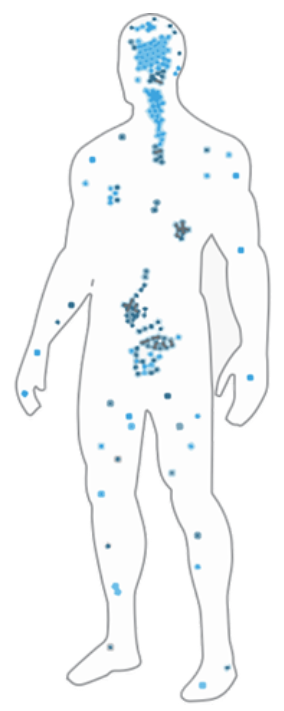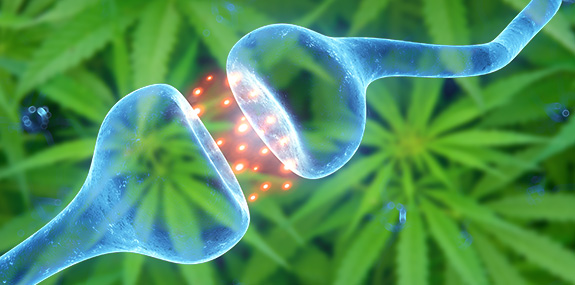Hoe does the endocannabinoid system work?
The endocannabinoid system consists of receptors, endogenous cannabinoids (endocannabinoids), and enzymes.
Receptors are large, complex molecules (usually proteins) that are in the cell wall. Certain substances can react with these receptors. It is like a key and lock: if the substance matches the complex structure of the receptor, there may be a reaction initiated. The receptor changes its structure, which activated a process within the cell. Some substances bind to the receptor without causing a reaction and block the effect. These are antagonists. An agonist is a substance that activates the receptors and ensures that the normal process is initiated.
The body produce itself substances that react with the cannabis-receptors. These are called endo-cannabinoids. Examples of this are anandamide and 2AG (2-arachidonylglycerol).


The Endocannabinoid System
Endocannabinoid Receptors are located all over the body – organs, connective tissues, glands, immune cells, etc.
The endocannabinoid system includes two primary types of receptors that bind to cannabinoids: CB1 and CB2. Unlike THC, which fits directly into the CB1 receptor, cannabidiol does not fit into either type of receptor perfectly. Instead, it stimulates activity in both receptors without binding to them. This results in changes within any cells that contain either receptor. Because CB1 and CB2 receptors are present throughout the body, the effects of CBD are systemic.
